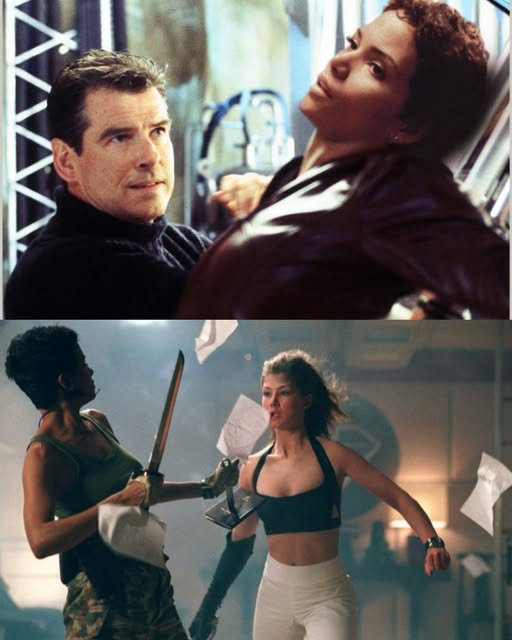Film Review: Die Another Day (2002)
Die Another Day, directed by Lee Tamahori, is the 20th installment in the James Bond franchise and marks Pierce Brosnan’s fourth and final appearance as Agent 007. Released in 2002 to coincide with the series’ 40th anniversary, the film combines the classic Bond elements—high-stakes espionage, exotic locations, and sleek gadgets—with a more modern, action-heavy approach.
The story follows Bond after he is betrayed during a mission in North Korea, captured, and imprisoned for over a year. Once released in a prisoner exchange, he goes rogue to uncover who was behind his betrayal. His quest leads him to the mysterious Gustav Graves, an eccentric billionaire whose space-based weapon, Icarus, threatens global stability. Along the way, Bond teams up with NSA agent Jinx Johnson, played by Halle Berry, in a globe-trotting adventure spanning from icy Iceland to the bustling streets of Havana.
Visually, Die Another Day is ambitious, offering spectacular set pieces—most notably the car chase across a frozen lake and the explosive climax aboard a disintegrating aircraft. The film also pushes the boundaries of gadgetry, with the now-famous invisible Aston Martin. However, its heavy reliance on CGI, particularly in certain action sequences, has been a point of criticism for some fans who prefer the practical stunts of earlier Bond films.
Brosnan delivers a suave yet hardened portrayal of Bond, reflecting a character who has endured betrayal and torture. Halle Berry brings charisma and physicality to her role, intended as a modern counterpart to Bond himself. Toby Stephens, as Gustav Graves, plays a flamboyant and theatrical villain, while Rosamund Pike’s Miranda Frost offers a more subtle, duplicitous threat.
While Die Another Day divides audiences—some praising its energetic action and celebratory nods to Bond’s history, others criticizing its over-the-top spectacle—it undeniably serves as a transitional point in the franchise. It closes the Brosnan era with a sense of scale and spectacle, paving the way for the grittier reboot in Casino Royale (2006).
In summary, Die Another Day is a bold, flashy, and sometimes excessive entry that encapsulates the early-2000s blockbuster style. It may not be the most grounded Bond film, but as a 40th-anniversary celebration, it delivers thrills, iconic moments, and a farewell to one of the franchise’s most stylish 007s.

